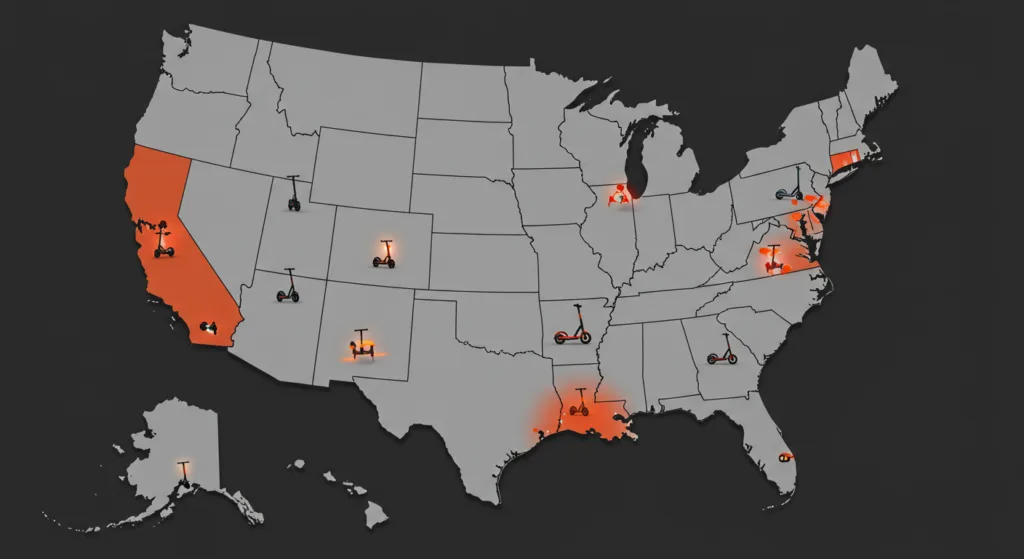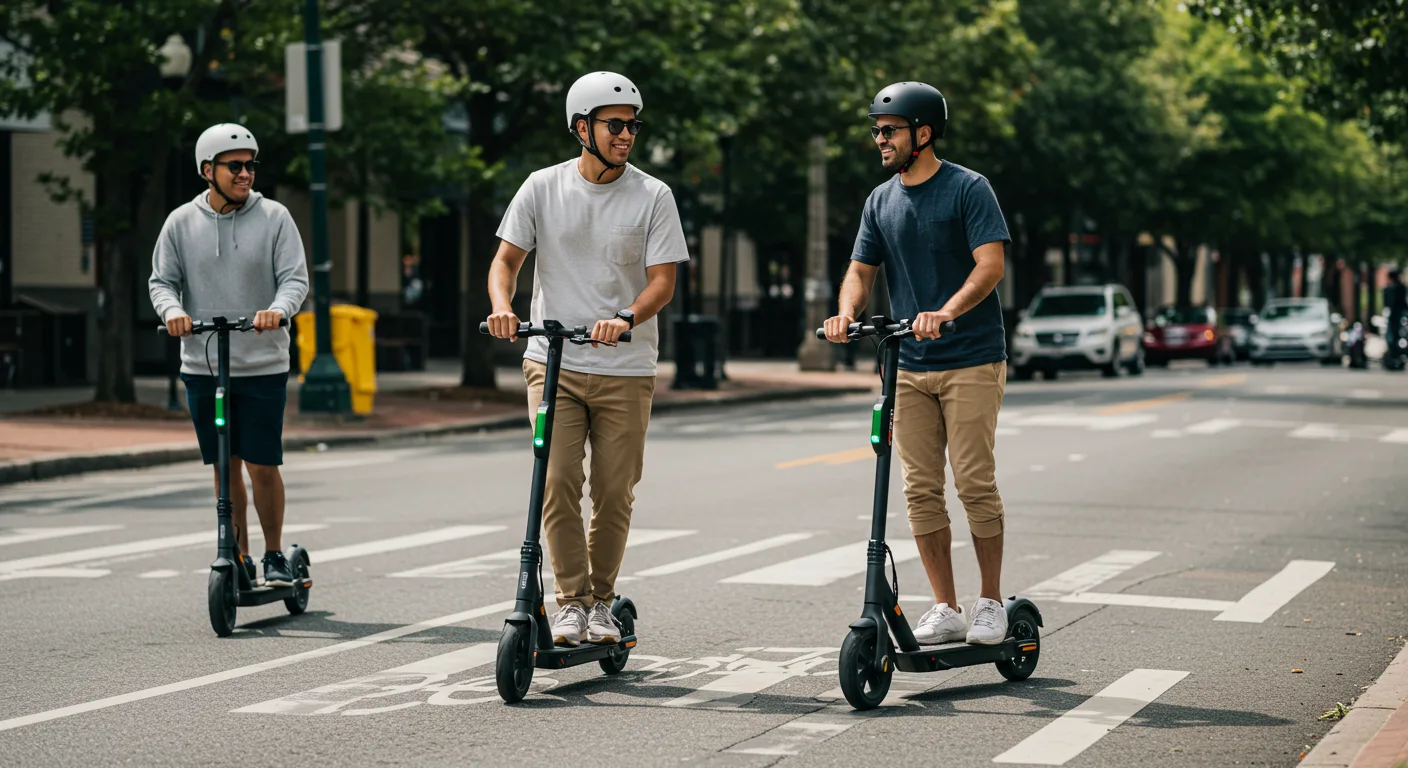Do You Need a License to Ride an Electric Scooter in the USA?

You will find e-scooters, also referred to as e-scooters, ubiquitous now in most American cities. With their popularity and eco-friendliness, however, people are increasingly riding on the small vehicles for short distances as well as for recreational rides. However, something that goes through most new riders’ minds is whether you do need a driver’s license to drive one.
Short answer: it depends where you are. There is no federal law in the US that covers electric scooters, so it differs from location to location. With that said, for a majority of states, you don’t technically need a full driver’s license to operate a typical e-scooter. That said, most do need you to carry some sort of identification or a learner’s permit with you, particularly if you are under 18.
Low speeds electric vehicles include e-scooters. Because they do not necessarily travel above 20 to 15 mph, they are not subject to a moped, for example, or a motorcycle category for all legal frameworks. For example, as a resident of California, you may drive an e-scooter on a normal driver’s license but do not have a requirement for a motorcycle license. New York allows e-scooter riding sans a license, as long as you follow some safety regulations such as a helmet requirement if you do not have a minimum age of 18.
What’s important here is that even if a license may not necessarily be needed, there are age restrictions as well as city traffic laws. It is best to look into your state or city’s laws before jumping on an e-scooter to avoid getting a ticket or otherwise getting into legal trouble.
Which States Require a Driver’s License for Electric Scooters?

Laws on whether you must have a driver’s license to drive a specific e-scooter vary widely state by state throughout America. California, Florida, and Texas have all enacted laws which do not require a motorcycle endorsement on a driver’s license for e-scooter riding, but also have laws strictly limiting speed, typically at 15 mph, and prohibiting riders on the sidewalk.
In Michigan, you will need at least a standard driver’s license to drive an e-scooter, and the e-scooter cannot travel faster than 25 mph. North Carolina defines electric scooters as being on a level with mopeds, with a driver’s license, registration, and even insurance, depending on the case. In Oregon and most, e-scooter riders will need a valid driver’s license, and nobody below 16 may drive them at all.
On the other hand, Washington D.C. and Colorado are relaxed. Though there is no license requirement there, riders must be at least 16 years old. Colorado permits you to ride on roads and bike lanes using e-scooters, but riders are advised to follow the same road rules as bicycles.
In a twist, however, some leave this up to individual towns. In Pennsylvania, e-scooters have been illegal throughout the state until recently. Cities such as Pittsburgh are currently conducting pilot projects attempting to figure out where e-scooters fit into city mobility, including what regulations apply for licenses and behavior.
There is not one rulebook for the entire nation as of 2025, and this frustrates visitors, as well as for initial users. However, a trend towards greater acceptance and clearer regulation, especially because e-scooters are seen as a convenient addition to city transport options, can be observed.
What Are the Legal Requirements for Electric Scooters in the U.S.?

Aside from licensing, there are several other legal limitations governing the use of electric scooters in the US. These generally include helmet laws, speed laws, vehicle specifications, and where you can drive.
Helmet wear is most common as a requirement. Helmets are mandated for 18 and below, as mandated by some, including California, and for 17 and below, as mandated by some, including New Jersey. Although there are a few states where helmets are not a requirement, they are highly recommended for safety’s sake. Injuries from e-scooters have increased threefold over the last half decade, and nearly 30% of all incidents have resulted in head trauma, according to the CDC.
Most also have strict speed limits for e-scooters. Typical speed limits are 15-20 mph. Going faster than this speed is often punished with fines, as well as with impounding vehicles. Geo-fencing also applies at some locations as a means to slow down e-scooter speeds where there is dense pedestrian traffic, for instance, parks and urban areas.
Legally, e-scooters generally require a 750-watt engine or smaller for street-legality. They also have a requirement for functional brakes, a white headlamp, and a red reflector or red light if they are used at night. Sidewalk riding is generally illegal, as a hazard for walkers, and most municipalities cause their users to drive in a bicycle lane or road with a 25-mph speed.
Another trend gaining traction is compulsory registration or insurance for certain types of e-scooters, especially for those that are being classed as mopeds. States that are labeling e-scooters as mopeds are already discussing stricter regulatory frameworks that will include such measures down the road, including Illinois and North Carolina.
Finally, DUI laws cover e-scooters as well. E-scooter driving and drunk driving, and driving after consuming drugs, can have the same penalty as driving a car, from fines, suspension, or even imprisonment where aggravating factors exist.
Conclusion
They offer a cheap, convenient, and eco-friendly alternative mode of transport, especially for congested city centers. Their legality, however, is not universal in America. While the majority do not require a motorcycle’s, some demand at least a driver’s. Helmets, age limits, speed, and road laws are all part of the law with which every rider should have a familiarity. As electricity increasingly becomes part of your daily routine, legislators are racing back with short but detailed legislation. Until then, keeping current on what is legal where you live is your best bet at getting your full experience with a minimum of legal bumps.



